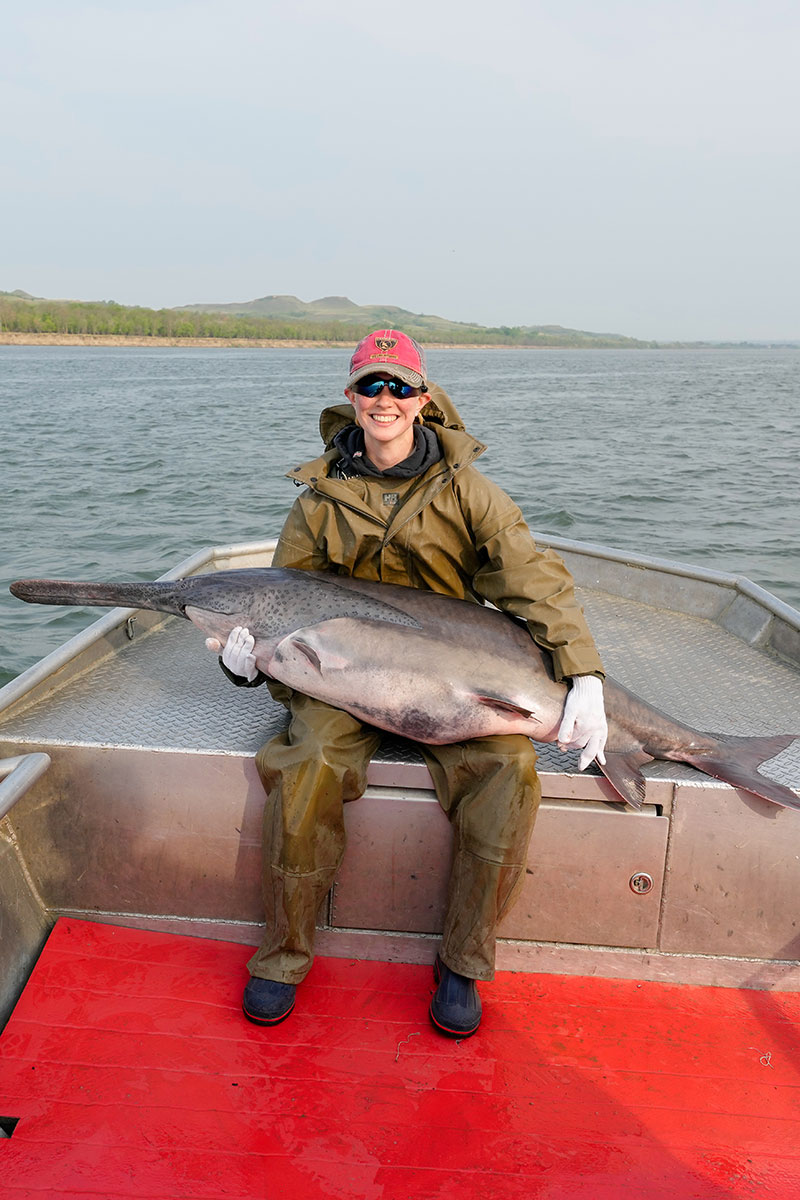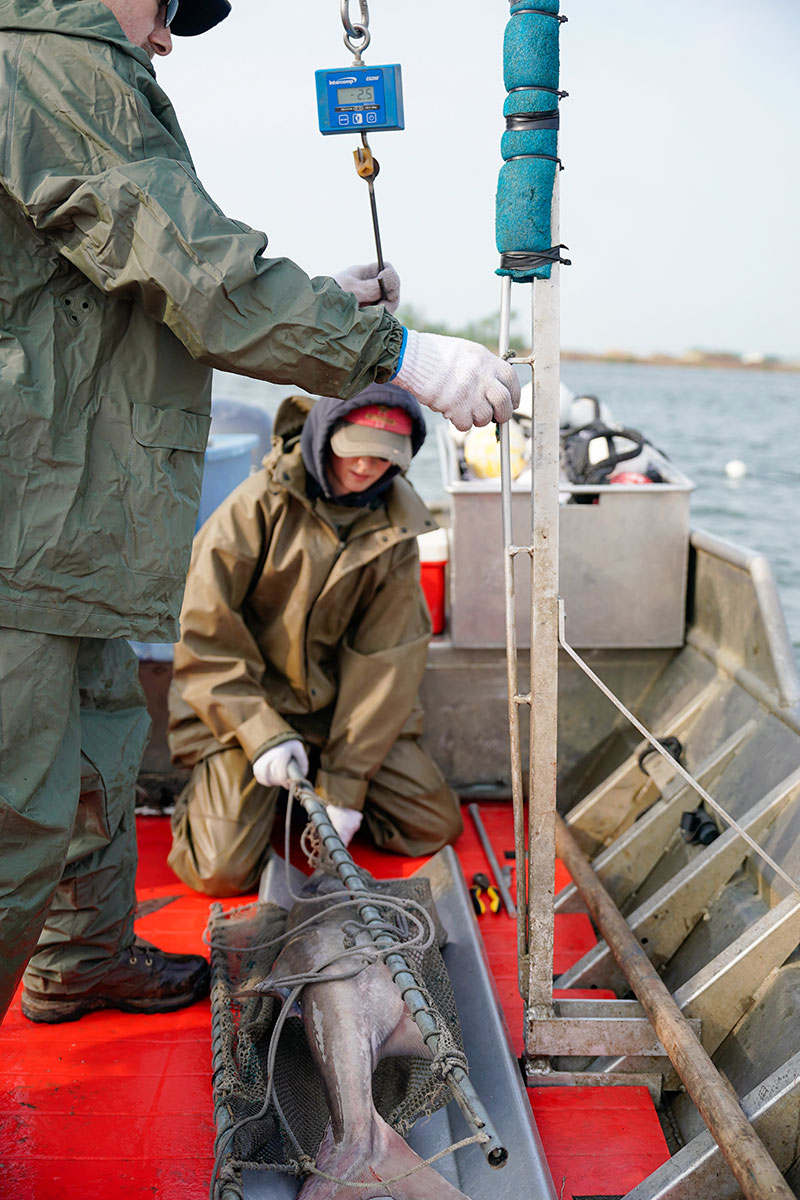Sandwiched Between Dams
Ron Wilson

While paddlefish hold the title of North Dakota’s largest fish, they feed on the tiniest prey, providing valuable insight into the health of the Missouri River System and those game fish species targeted by anglers.
State Game and Fish Department fisheries biologists have long monitored the paddlefish population confined to the Garrison Reach of the Missouri River by gigantic dams both upstream and down. In nearly two decades, biologists have captured and tagged more than 10,000 paddlefish between Garrison Dam and the headwaters of Lake Oahe.
Because paddlefish are filter feeders focusing on zooplankton, their attention to the low end of the food web makes them one of the river’s canaries in the coal mine species.
“Zooplankton are one of the key sources of food for our newly hatched walleye, northern pike, crappie and a lot of other species that anglers are very interested in,” said Paul Bailey, Department south central fisheries supervisor. “So, learning more about paddlefish and the health of paddlefish in the Missouri River upstream of Bismarck provides pretty good insight on the overall health of our fishery.”
Bailey said learning about, say, walleye, pike and yellow perch is easy in North Dakota with hundreds of fisheries to investigate. Yet, with only two paddlefish populations in the state – one above Garrison Dam and one below – investing the effort to net and tag fish when and where biologists know where the fish are is important.
“We don’t have many opportunities to learn from paddlefish. So, even though this population down here doesn’t support a recreational fishery, it still can provide good insight on how to properly manage paddlefish in North Dakota,” Bailey said in early June.
Paddlefish found in the Garrison Reach spend the majority of their time in Lake Oahe where their food source is most abundant, but in spring the sexually mature fish head upstream to spawn, or at least go through the motions, most notably north of Bismarck.

A paddlefish is tagged in the jaw.
“These fish seem to kind of concentrate in this area in all likelihood to attempt to spawn and aren’t very mobile in about this 10- to- 12-mile reach of the river,” Bailey said. “When we first started doing these population estimates, just to see where these fish were really concentrated, we floated from Washburn all the way down to Eckroth Bottoms and about 97-98% of the paddlefish that we encountered were in this tiny, 10- to 12-mile reach of the river.”
While sexually mature male paddlefish typically attempt to spawn once every two years and females typically every two or three years, there is no evidence that suggests that any natural reproduction is occurring.

To sample fish, Department fisheries personnel float 180-foot nets downstream that work effectively in depths of 6 to 8 feet. Once the bobbers on the nets floating perpendicular to the flow start to bob, they know they’re into fish.
Paddlefish are then measured for length from the eye to the fork in the tail. They are also weighed and fitted with large jaw tags.
“Almost 40% of the fish that we’re seeing annually now in our sampling are fish that we’ve handled in previous years that have been previously tagged,” Bailey said. “And then, of course, anglers sometimes incidentally encounter some of these paddlefish. Unfortunately, we do see a number of boat collisions. There’s a lot of boat traffic on the Missouri River around Bismarck when these paddlefish are in the area. Unfortunately, some of them are killed every year due to boat collisions.”
Later in summer, after the paddlefish have turned and headed south in the direction of Lake Oahe, encounters north of Bismarck drop dramatically.
“A lot of time later in summer, there are very few to no paddlefish in the Missouri River above Bismarck,” Bailey said. “A lot of what we’ve learned is interesting and helps in the effort to learn more about what factors influence the health of our paddlefish populations in the state.”

